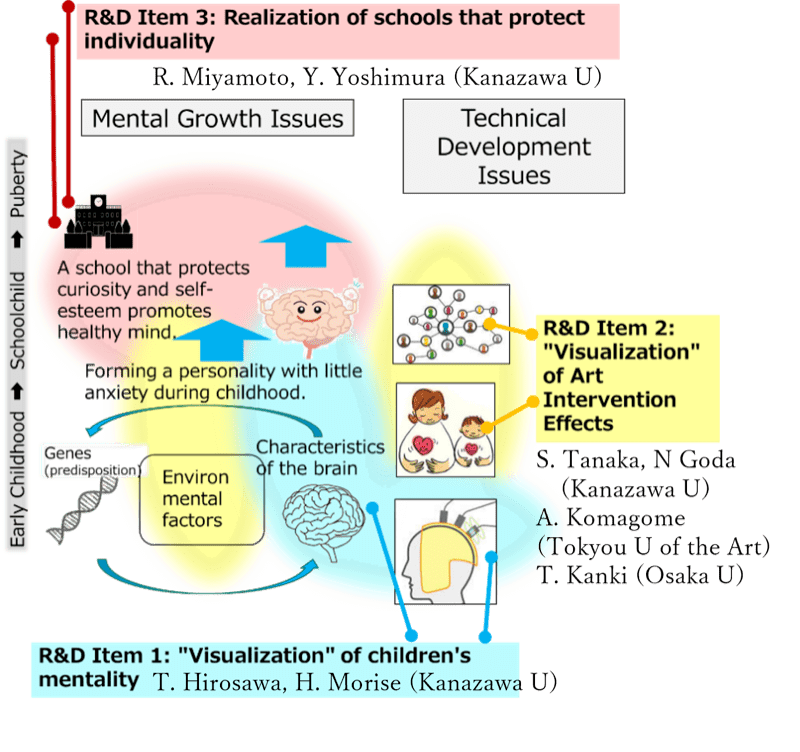R&D Project

Goal 9 R&D Projects (FY2021 - FY2024)Protecting children's intellectual curiosity and individuality to realize a dynamic society
Project manager (PM)KIKUCHI MitsuruProfessor, Graduate School of Medical Sciences, Kanazawa University
Summary of the project
This project aims to realize an environment where everyone can grow up keeping their innate curiosity, thereby creating a society filled with active motivation and originality. Self-esteem damage in childhood can cause resilience to decline in later life, but by effectively preventing this type of problem we can realize a dynamic future society rich in intellectual curiosity. Specifically, we will use brain imaging technology to analyze children's brain characteristics, visualize the effects of interventions through optimized artistic activities, and implement them in society in collaboration with local governments.
Milestone by the end of project (year 2025)
- Develop a system to assess the diversity of ASD. This will protect and support ASD children, who constitute approximately 2% of the population, and establish elements to create a creative environment that nurtures individuality and realizes a mentally rich society.
- Verify the potential application of future-type magnetoencephalography sensors on infants to make the infant brain magnetoencephalography system more affordable and practical.
- Propose art intervention activities tailored to individual personalities that generate "curiosity" and "peace of mind."
- Propose a school education model that achieves peace of mind and increased vitality.
- Develop a practical system that captures peace of mind through the cardiac autonomic nervous system.
- Develop a system that captures social curiosity through quantitative analysis of interpersonal networks.
R&D theme progress reports
R&D theme structure of the project

The research and development can be broadly divided into four themes. Starting from the bottom of the diagram, the first theme focuses on objectifying the individuality of preschool children. The second theme involves verifying the effectiveness of art intervention. The third theme aims to establish schools that preserve individuality. Lastly, the fourth theme aims to evaluate the effects of music and art interventions. These four themes are interconnected. We will promote these initiatives in collaboration with universities, companies, and local governments.
Leader's institution
Kanazawa University
R&D institutions
Osaka University, Kanazawa University, Kyoto University, Tokyo University, Tokyo University of the Arts
PDF Download
- Summary of the project (202KB)